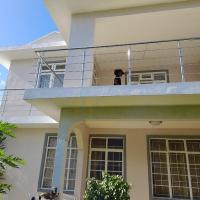Inox Stair Balustrade Fittings SUS 201 304 316 Stainless Steel
Railing Components Glass Handrail Accessories
How to choose the appropriate size and specifications of Inox Stair
Balustrade Fittings SUS 201 304 316 Stainless Steel Railing
Components Glass Handrail Accessories?
When selecting the appropriate size and specifications of Inox
Stair Balustrade Fittings SUS 201, 304, or 316 Stainless Steel
Railing Components and Glass Handrail Accessories, there are
several factors to consider. Here are some guidelines to help you
make the right choice:
1. Handrail System Requirements: Understand the requirements of
your handrail system, including the type of handrail (glass, metal,
etc.), the overall design, and the intended use. Different systems
may have specific requirements for fittings and accessories.
2. Material Grade: Determine the desired material grade (SUS 201,
304, or 316) based on your project's needs. Consider factors such
as corrosion resistance, durability, and budget. SUS 316 stainless
steel is typically recommended for enhanced corrosion resistance in
outdoor or marine environments.
3. Compatibility: Ensure that the balustrade fittings and
components are compatible with your chosen handrail system. Check
the dimensions, specifications, and attachment methods to ensure a
proper fit.
4. Size and Dimensions: Consider the size and dimensions of the
fittings in relation to your handrail system. Take measurements of
the handrail, posts, and any glass panels to determine the
appropriate size of the fittings. Common measurements include tube
diameter, height, width, and glass panel thickness.
5. Aesthetic Considerations: Consider the desired aesthetic appeal
of your handrail system. Choose fittings and accessories that
complement the overall design and style of the space. Consider
factors such as the finish (e.g., mirror satin, brushed) and any
decorative or ornamental details.
6. Safety and Building Codes: Ensure that the chosen fittings and
components meet the safety standards and building codes applicable
to your area. Check for any specific requirements related to
load-bearing capacity, height regulations, and other safety
considerations.
7. Manufacturer's Recommendations: Consult the manufacturer's
guidelines and recommendations for selecting the appropriate size
and specifications of the fittings. They can provide valuable
information based on their product offerings and expertise.
How to judge the quality and reliability of Inox Stair Balustrade
Fittings SUS 201 304 316 Stainless Steel Railing Components Glass
Handrail Accessories?
To judge the quality and reliability of Inox Stair Balustrade
Fittings SUS 201, 304, or 316 Stainless Steel Railing Components,
and Glass Handrail Accessories, you can consider the following
factors:
1. Material Grade: Start by verifying the material grade of the
fittings. SUS 201, 304, and 316 stainless steel are commonly used
for their corrosion resistance properties. Ensure that the fittings
are made from high-quality stainless steel and that the material
grade matches the specifications provided by the manufacturer.
2. Manufacturing Standards and Certifications: Check if the
manufacturer follows recognized manufacturing standards and holds
relevant certifications. Look for certifications like ISO 9001,
which indicate adherence to quality management systems.
3. Durability and Strength: Assess the durability and strength of
the fittings. They should be able to withstand the intended load
and usage requirements. Consider factors such as the wall thickness
of the tubes, the construction of joints and connectors, and the
overall build quality.
4. Corrosion Resistance: Stainless steel fittings are known for
their corrosion resistance. Ensure that the fittings have proper
surface treatment, such as passivation or electropolishing, to
enhance their corrosion resistance properties. This is particularly
important for outdoor or coastal applications.
5. Finish and Aesthetics: Examine the finish of the fittings and
assess their overall aesthetic appeal. Look for a consistent and
well-executed finish that matches your desired design. Pay
attention to details such as smooth edges, uniform surface
appearance, and absence of visible defects.
6. Testing and Quality Assurance: Inquire about the manufacturer's
testing and quality assurance processes. Reliable manufacturers
often conduct rigorous testing to ensure their products meet
industry standards. This may include tests for load-bearing
capacity, structural integrity, and corrosion resistance.
7. Warranty and Customer Support: Check if the manufacturer offers
a warranty on their products. A warranty indicates the
manufacturer's confidence in the quality and reliability of their
fittings. Additionally, consider the availability of customer
support and after-sales service in case you encounter any issues or
have questions.
8. Reviews and Reputation: Read customer reviews and feedback about
the manufacturer and their products. Look for reputable suppliers
with a track record of delivering high-quality fittings and
accessories. Online forums, industry websites, and professional
networks can be valuable sources of information.
9. Compliance with Safety Standards: Ensure that the fittings
comply with safety standards and building codes applicable to your
area. This includes factors such as load-bearing capacity, height
regulations, and safety features.
Specifications:
| Description | Railing post fittings, baluster fittings,post fittings, balcony
fittings, floor fittings,banister fittings, staircase fittings, handrail
fittings, stainless steel post fittings, fence fittings; post accessories, floor accessories, banister accessories, baluster accessories,
balcony accessories, flooring accessories, metal stair railing
accessories, fence accessories, balustrade accessories, handrail
accessories, staircase accessories, railing accessories; handrail
parts,post parts, balustrade parts, balcony parts, railing
parts,floor parts,banister parts, staircase parts; post components,
balcony components, fence component, railing component, floor components,banister components, staircase components, balustrade components, handrail components. |
| Material | Stainless Steel 201, Stainless Steel 304 304L,Stainless Steel 316
316L. |
| Surface | Mirror Polish, Satin,PSS, SSS,PVD Color. |
| Process | Casting/Welding/CNC/Punching. |
| Application | Staircase/Railing/Swimming Pool/Bridge Railings/Desk Railings/Porch
railings/Balcony Railings. |
Can Inox Stair Balustrade Fittings SUS 201 304 316 Stainless Steel
Railing Components Glass Handrail Accessories be used in outdoor
environments and harsh weather conditions?
Yes, Inox Stair Balustrade Fittings SUS 201, 304, and 316 Stainless
Steel Railing Components, and Glass Handrail Accessories can
generally be used in outdoor environments and harsh weather
conditions. Stainless steel is known for its excellent resistance
to corrosion, making it a suitable choice for outdoor applications.
SUS 316 stainless steel, in particular, offers enhanced corrosion
resistance compared to SUS 201 and 304 stainless steel. It contains
molybdenum, which provides increased resistance to corrosive
elements such as saltwater and harsh chemicals. Therefore, SUS 316
stainless steel is often recommended for outdoor or marine
environments where exposure to moisture, salt, and other
environmental factors is a concern.
However, it's important to note that even though stainless steel is
highly resistant to corrosion, it is not entirely immune. Factors
such as the quality of the stainless steel, the specific
environmental conditions, and regular maintenance practices can
affect the performance and durability of the fittings.
To ensure the longevity and performance of Inox Stair Balustrade
Fittings in outdoor environments and harsh weather conditions,
consider the following:
1. Material Grade: Choose higher-grade stainless steel, such as SUS
316, for superior corrosion resistance.
2. Surface Treatment: Ensure that the fittings have proper surface
treatment, such as passivation or electropolishing, to enhance
their corrosion resistance.
3. Regular Maintenance: Regularly clean the fittings and remove any
accumulated dirt, debris, or salt deposits. This helps prevent
corrosion and maintains the appearance of the fittings.
4. Protective Coatings: If desired, you can apply additional
protective coatings or finishes to further enhance the corrosion
resistance of the fittings.
5. Professional Installation: Proper installation by trained
professionals ensures that the fittings are securely attached and
sealed to prevent water ingress and potential corrosion.












